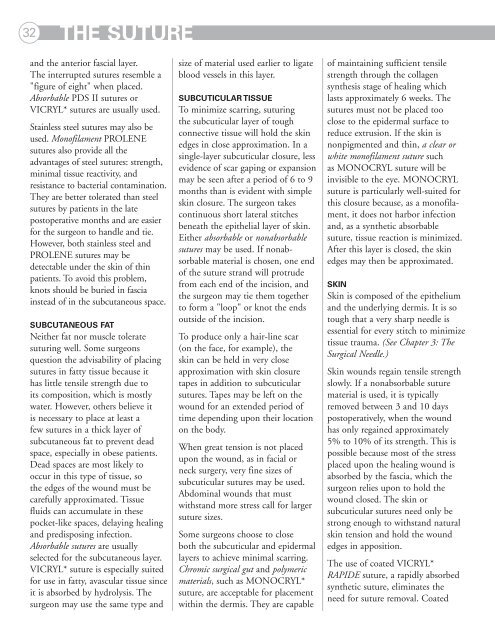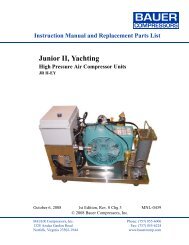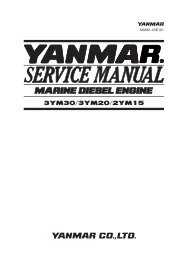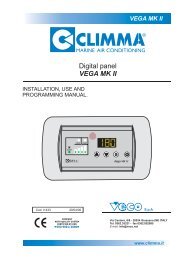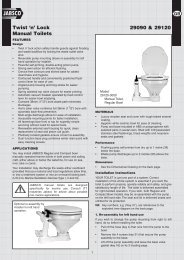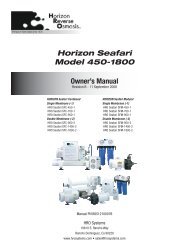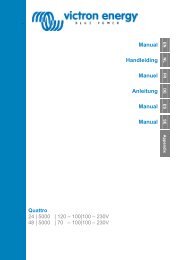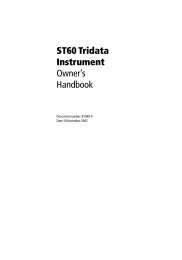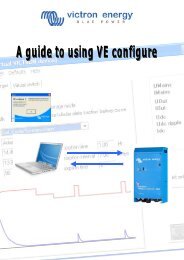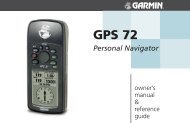Wound Closure Manual (PDF) - Penn Medicine
Wound Closure Manual (PDF) - Penn Medicine
Wound Closure Manual (PDF) - Penn Medicine
You also want an ePaper? Increase the reach of your titles
YUMPU automatically turns print PDFs into web optimized ePapers that Google loves.
32<br />
THE SUTURE<br />
and the anterior fascial layer.<br />
The interrupted sutures resemble a<br />
"figure of eight" when placed.<br />
Absorbable PDS II sutures or<br />
VICRYL* sutures are usually used.<br />
Stainless steel sutures may also be<br />
used. Monofilament PROLENE<br />
sutures also provide all the<br />
advantages of steel sutures: strength,<br />
minimal tissue reactivity, and<br />
resistance to bacterial contamination.<br />
They are better tolerated than steel<br />
sutures by patients in the late<br />
postoperative months and are easier<br />
for the surgeon to handle and tie.<br />
However, both stainless steel and<br />
PROLENE sutures may be<br />
detectable under the skin of thin<br />
patients. To avoid this problem,<br />
knots should be buried in fascia<br />
instead of in the subcutaneous space.<br />
SUBCUTANEOUS FAT<br />
Neither fat nor muscle tolerate<br />
suturing well. Some surgeons<br />
question the advisability of placing<br />
sutures in fatty tissue because it<br />
has little tensile strength due to<br />
its composition, which is mostly<br />
water. However, others believe it<br />
is necessary to place at least a<br />
few sutures in a thick layer of<br />
subcutaneous fat to prevent dead<br />
space, especially in obese patients.<br />
Dead spaces are most likely to<br />
occur in this type of tissue, so<br />
the edges of the wound must be<br />
carefully approximated. Tissue<br />
fluids can accumulate in these<br />
pocket-like spaces, delaying healing<br />
and predisposing infection.<br />
Absorbable sutures are usually<br />
selected for the subcutaneous layer.<br />
VICRYL* suture is especially suited<br />
for use in fatty, avascular tissue since<br />
it is absorbed by hydrolysis. The<br />
surgeon may use the same type and<br />
size of material used earlier to ligate<br />
blood vessels in this layer.<br />
SUBCUTICULAR TISSUE<br />
To minimize scarring, suturing<br />
the subcuticular layer of tough<br />
connective tissue will hold the skin<br />
edges in close approximation. In a<br />
single-layer subcuticular closure, less<br />
evidence of scar gaping or expansion<br />
may be seen after a period of 6 to 9<br />
months than is evident with simple<br />
skin closure. The surgeon takes<br />
continuous short lateral stitches<br />
beneath the epithelial layer of skin.<br />
Either absorbable or nonabsorbable<br />
sutures may be used. If nonabsorbable<br />
material is chosen, one end<br />
of the suture strand will protrude<br />
from each end of the incision, and<br />
the surgeon may tie them together<br />
to form a "loop" or knot the ends<br />
outside of the incision.<br />
To produce only a hair-line scar<br />
(on the face, for example), the<br />
skin can be held in very close<br />
approximation with skin closure<br />
tapes in addition to subcuticular<br />
sutures. Tapes may be left on the<br />
wound for an extended period of<br />
time depending upon their location<br />
on the body.<br />
When great tension is not placed<br />
upon the wound, as in facial or<br />
neck surgery, very fine sizes of<br />
subcuticular sutures may be used.<br />
Abdominal wounds that must<br />
withstand more stress call for larger<br />
suture sizes.<br />
Some surgeons choose to close<br />
both the subcuticular and epidermal<br />
layers to achieve minimal scarring.<br />
Chromic surgical gut and polymeric<br />
materials, such as MONOCRYL*<br />
suture, are acceptable for placement<br />
within the dermis. They are capable<br />
of maintaining sufficient tensile<br />
strength through the collagen<br />
synthesis stage of healing which<br />
lasts approximately 6 weeks. The<br />
sutures must not be placed too<br />
close to the epidermal surface to<br />
reduce extrusion. If the skin is<br />
nonpigmented and thin, a clear or<br />
white monofilament suture such<br />
as MONOCRYL suture will be<br />
invisible to the eye. MONOCRYL<br />
suture is particularly well-suited for<br />
this closure because, as a monofilament,<br />
it does not harbor infection<br />
and, as a synthetic absorbable<br />
suture, tissue reaction is minimized.<br />
After this layer is closed, the skin<br />
edges may then be approximated.<br />
SKIN<br />
Skin is composed of the epithelium<br />
and the underlying dermis. It is so<br />
tough that a very sharp needle is<br />
essential for every stitch to minimize<br />
tissue trauma. (See Chapter 3: The<br />
Surgical Needle.)<br />
Skin wounds regain tensile strength<br />
slowly. If a nonabsorbable suture<br />
material is used, it is typically<br />
removed between 3 and 10 days<br />
postoperatively, when the wound<br />
has only regained approximately<br />
5% to 10% of its strength. This is<br />
possible because most of the stress<br />
placed upon the healing wound is<br />
absorbed by the fascia, which the<br />
surgeon relies upon to hold the<br />
wound closed. The skin or<br />
subcuticular sutures need only be<br />
strong enough to withstand natural<br />
skin tension and hold the wound<br />
edges in apposition.<br />
The use of coated VICRYL*<br />
RAPIDE suture, a rapidly absorbed<br />
synthetic suture, eliminates the<br />
need for suture removal. Coated


